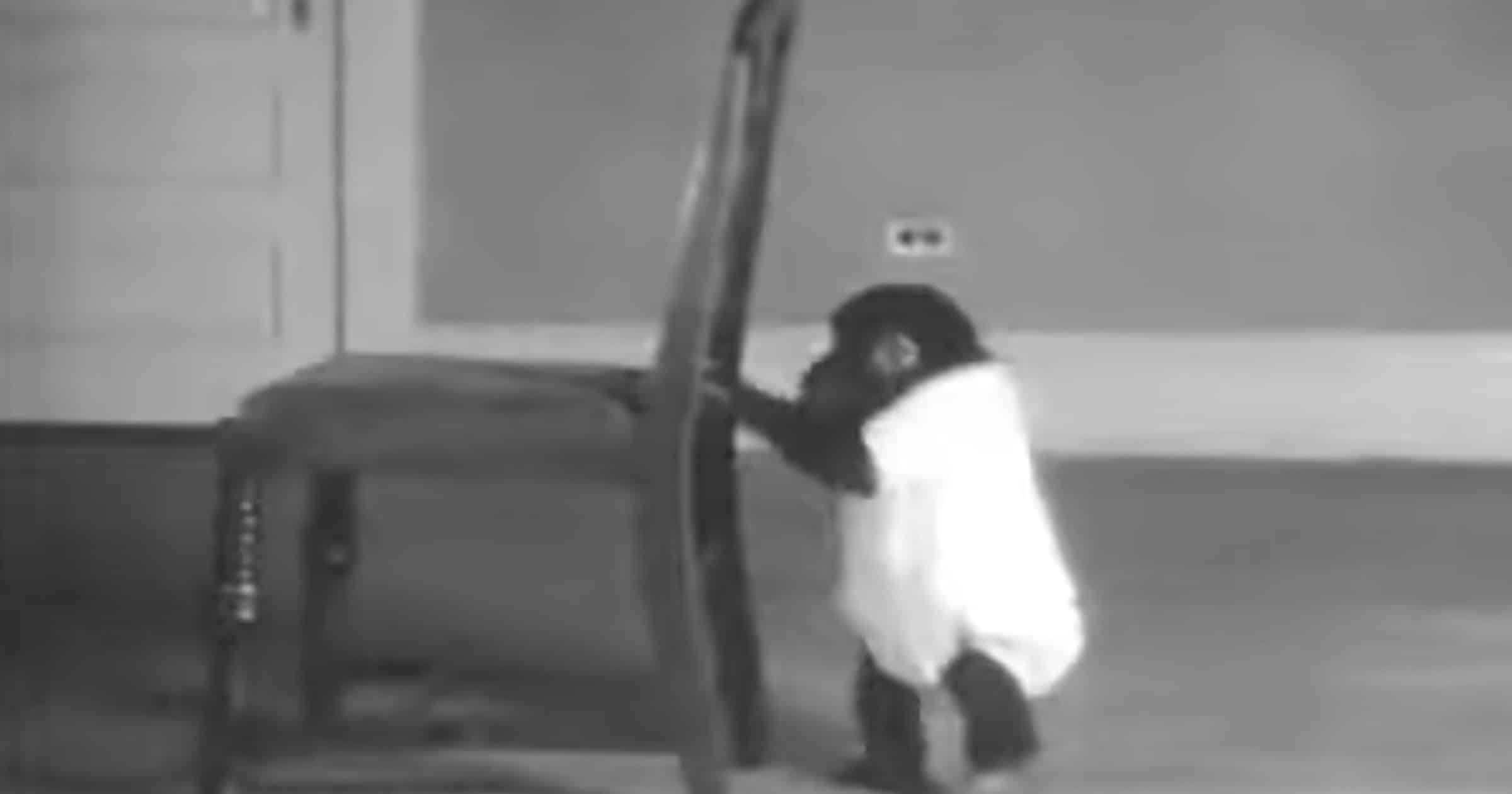 Human Origins
Human Origins
 Neuroscience & Mind
Neuroscience & Mind
When a Child and a Chimp Were Raised Together

A recent item on X pointed to a story many of us hadn’t heard before about a couple’s effort to raise their infant son with a baby chimpanzee. Before you interrupt to offer condemnation, let me start by saying that the (true) story took place in the early 1930s when materialism seemed new and exciting to many. If anyone tried that in 2023, Child Protective Services and the SPCA would promptly be called.
Into the Time Capsule
But let’s climb into the time capsule (in our imaginations) and go back to 1931, when this kind of thing was still New and Cool.
When their son Donald Kellogg was ten months old, psychologists Winthrop and Luella Kellogg decided to raise him alongside a baby female chimpanzee (7 months), Gua, in their temporary home in Florida, near a primate research center. Winthrop Kellogg had written about the possibilities of humanizing the ape and the birth of a son was his chance. He would treat the two infants in the exact same way.
It was a confident time for projects like humanizing a baby chimp. But after nine months, the Kelloggs had to cancel the experiment. What happened? Different stories are told: Here’s one from Reuters in 1951:
The experiment was described by Sir Cyril Burt, former professor of psychology at London University in an article for The Family Doctor, the British Medical Association magazine. Raised by the professor and his wife, “Gua was treated, not as an animal pet, but as a member of the family, dressed exactly like the child, nursed and trained in the same way, rewarded, scolded or punished in the same way,” the article said. But early in the second year the child began to use words and phrases quite spontaneously, and to imitate the actions of its elders, in a way the animal never could manage.
“LITTLE ‘CHIMP’ PROVES SMARTER THAN HUMAN BABY AFTER 1 YEAR”. THE MONTREAL GAZETTE. REUTERS. JULY 27, 1954
A More Nuanced Story
So there was a natural divergence of abilities. But a more nuanced story emerged later:
Rachel Nuwer writes at Smithsonian Magazine:
It could be that the Kelloggs were simply exhausted from nine months of nonstop parenting and scientific work. Or perhaps it was the fact that Gua was becoming stronger and less manageable, and that the Kelloggs feared she might harm her human brother. Finally, one other possibility comes to mind, the authors point out: While Gua showed no signs of learning human languages, her brother Donald had begun imitating Gua’s chimp noises. “In short, the language retardation in Donald may have brought an end to the study,” the authors write.
RACHEL NUWER, “THIS GUY SIMULTANEOUSLY RAISED A CHIMP AND A BABY IN EXACTLY THE SAME WAY TO SEE WHAT WOULD HAPPEN,SMITHSONIAN MAGAZINE, JULY 28, 2014
Well, now that the journal authors mention it, if a child is raised with a chimpanzee who is treated as if she were another child, that would interrupt his development. Donald was supposed to be learning to speak from parents, sibs, and playmates during critical formative years, not from an ape. Ultimately, the chimpanzee would never go on to talk but the boy could end up with delayed speech.
The parents did get a study and a book out of it though, published in 1933:
The overall study, called The Ape and the Child, is of more historical than scientific interest. Gua developed, physically, a great deal faster than Donald did. Gua imitated adult behaviors, wearing shoes, opening doors using the door handle, and feeding herself with a glass and a spoon. The chimp also outperformed the human when it came to physical tests.
ESTHER INGLIS-ARKELL, “THE 1931 EXPERIMENT THAT PAIRED A NEWBORN CHIMP WITH A NEWBORN BABY,” GIZMODO, DECEMBER 5, 2013
In the end, the Kelloggs returned to Indiana. Gua was returned to the primate center where she died a year later of pneumonia. And several authors have felt it worth mentioning that Donald Kellogg killed himself in 1973, aged just 43.
Not a Material Thing
Looking at the story from nearly a century’s distance, it’s hard to see what the experiment really demonstrated that could not have been observed by studying baby humans and baby chimps separately: Chimpanzees develop faster physically but then reach an intellectual plateau, relative to children, from which they never advance. Though there have been various attempts, no one has ever been able to give chimpanzees human minds — the real goal all along, surely — because the human mind is not a material thing. We cannot go around dispensing what we simply do not control.
And we can all be grateful for experimentation ethics committees today. At least it’s an effort.
Cross-posted at Mind Matters.
